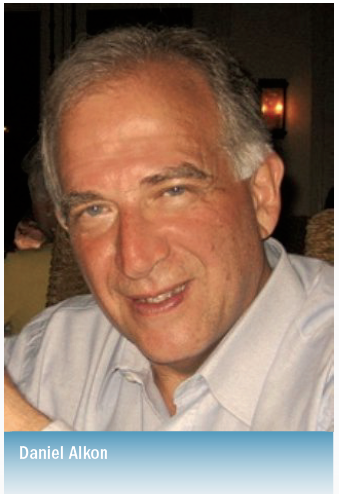Article
Applied Clinical Trials
Applied Clinical Trials
Alzheimer’s Research Finds New Beginnings
Author(s):
Despite mounting frustrations in drug R&D for Alzheimer's disease, emerging biopharma firms are still pursuing AD therapies with new science, and different preclinical and clinical trial models.

The field of Alzheimer’s disease (AD) poses significant opportunity but has been faced with big challenges and massive late-phase clinical trial failures. Despite subsequent setbacks in the field, emerging biopharÂmaceutical companies are still pursuing AD therapies with new science, and differÂent preclinical and clinical trial models. In this interview, Dr. Daniel Alkon, president and chief science officer at Neurotrope, discusses novel approaches to AD therapy development.
Moe Alsumidaie: Why is Alzheimer’s disease an area of great challenge with many trial failures?
Daniel Alkon: When Alois Alzheimer disÂcovered the disease around 1906, it didn’t have any traction. In 1984, two scientists identified a protein called amyloid-beta. When that happened,everyone thought,”Oh, this will be a real breakthrough because we now know what key protein is involved. And it was involved in what are called amyÂloid plaques and tau tangles, neurofibrillary tangles,which are the pathologic hallmarks.
The main approach, neuro-pharmacoÂlogic approach, is where researchers tried to develop drugs to address other deficits that people had thought attended those pathologic deposits, such as the loss of cholinergic neurons, which contribute to memory and attention deficits. This worked to the point where we developed drugs that provided mild symptomatic relief, but did not treat the disease. So, the industry started to focus on getting rid of amyloid-beta buildup, as they believed the disease was caused by that protein.
There have been many approaches to try to reduce amyloid-beta. One is to use animal antibodies to combine with and eliminate amyloid-beta; another involves activating enzymes in the brain to degrade amyloid-beta, and another is to inhibit enÂzymes in the brain that help form A-Beta, such as inhibitors of beta-secretase; none of these approaches worked. Many scientists had thought that amyloid plaque and tau tangles were destroying brain neurons and synapses; this theory was also disproven.
MA: What have you discovered is the main contributor to AD?
DA: I worked on memory at the NIH and then at the Rockefeller Neuroscience InstiÂtute for 15 years, and we implicated cerÂtain key molecular pathways that were reÂsponsible for memory formation. In memory formation, we found that we could demÂonstrate with electron microscopy the forÂmation of new synapses. Once we underÂstood that and the pathology that had been acquired with human brain samples, we hyÂpothesized that we could facilitate not only memory formation but also the formation of synapses, which might be a regenerative or restorative approach to AD.
That motivated us to work on clinical triÂals, first with a compassionate use trial with patients suffering from advanced AD. We generated successful results, hence, we went to a Phase II trial, and we published the results recently in the Journal of Alzheimer’s Disease.
Alexander Neumeister: What is your hypothesis?
DA: Our hypothesis is that since we saw an improvement in patients who underwent the compassionate use trial, we pursued a larger number of patients to see if we could achieve similar results. Results from that study demonstrate clear signals, including not only a reduction in degradation, but also a reversal in memory loss and an improveÂment in their conventional psychometric measurements. Even one month post-study completion, and after all treatment had been stopped, results were consistent with a new and constructed wiring. These findÂings have encouraged us to continue develÂopment with this hypothesis.
MA: What did other researchers miss in their animal models?
DA: I think a lot of the industry was misled by some of the animal models that they used. For example, there was one double transgenic amyloid precursor protein (APP) model that the industry used. The APP model makes a huge amount of amyloid, so much amyloid that it acts like a tumor occuÂpying space in the animal’s brain. So, if there is a reduction in that amyloid and it’s not so huge anymore, the animal tends to get betÂter. But that’s not what happens in AD; we tend to observe a gradual build-up of much less amyloid.
MA: Why did you target patients with advanced AD?
DA: While we have every reason to believe that we can treat much milder cases and even prevention, we chose patients with adÂvanced AD because we saw benefits in the compassionate use patients, which were very advanced. And it’s because the indusÂtry basically has abandoned that niche and we wanted to see whether we could underÂtake that challenge.
MA: What challenges did you experience with recruiting and retaining patients with advanced AD?
DA: Patients with advanced AD are a chalÂlenge to recruit. But, fortunately, we had 27 sites with principal investigators at each site and a dedicated team of researchÂers. We were pleasantly surprised that we could recruit the patients, even though they were advanced based on their careÂgivers making the decision, and we believe that we saw such good recruitment figures because of our relationship with our invesÂtigators and their relationship with their paÂtients and caregivers. We also believe what contributed to this success was the hope of reversing AD with these patients; we saw very few dropouts, and we think that was fueled by the hope that our medical product could improve those patients’ lives. For instance, in the compassionate use trial, one patient who has a familial gene for early onset AD (by the time she was 31 or so), and couldn’t speak, swallow, or move at the beginning of the trial, saw a significant improvement in speech, movement, and her livelihood. That story got around, and the story fueled recruitment and retention.
Moe Alsumidaie, MBA, MSF, is a thought leader and expert in the application of busiÂness analytics toward clinical trials, and an Editorial Advisory Board member for and regular contributor to Applied Clinical Trials.
Alex Neumeister is Head of Medical Affairs at CliniBiz and specializes in protocol design, drug safety, and clinical trial management.

Newsletter
Stay current in clinical research with Applied Clinical Trials, providing expert insights, regulatory updates, and practical strategies for successful clinical trial design and execution.





